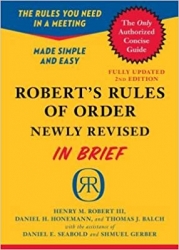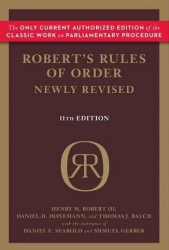Parliamentary procedure is an orderly set of rules for conducting meetings of organized groups, for the purpose of accomplishing their goals fairly. Use of parliamentary procedure ensures:


- Justice and courtesy for all
- Maintenance of order
- Consideration of one item at a time
- The rule of the majority
- The rights of the minority
Utah PTA follows Roberts Rules of Order Newly Revised per Bylaws Article XIV.
Terminology
Bylaws
Specific rules adopted by a PTA that must be followed. Should be reviewed every three years for necessary amendments or renewal. Local and council PTAs can now review and renew Bylaws online.
Chair
The presiding officer.
Majority Vote
At least one more than half of the votes cast.
Motion
A formal proposal made to bring a subject before an assembly for its consideration and action. Begins “I move.”
Quorum
The number of members required to be present at a meeting, as set forth in the bylaws, in order that the assembly may transact business. The number can be found in your Bylaws Article IX, Section 8.
Standing Rules
Rules outlining procedures of the organization which are not included in the bylaws and which must not conflict with the bylaws. They may be amended or rescinded at any time by a two-thirds vote, or if notice has been given, by a majority vote. They may be set aside, for one meeting only, by a majority vote.
A Few Tips to Follow:
- A tie vote is a lost vote
- Hasty action may be corrected by use of the motion to reconsider: This motion may be made only by one who voted on the prevailing side.
- To stop debate and force the vote a member should obtain the floor and say, "I move the previous question" or "I call the question." This requires a second and a two-thirds vote.
See How to Make or Amend a Motion
Take National PTAs Using Parliamentary Procedures for Effective Meetings e-Learning workshop
